Sports Education
Top 10 Most Followed Athletes On Twitter

Athletes are idolised by billions of people throughout the world. They are ecstatic to learn about every single update that athletes share with them, particularly on Twitter.
Athletes make a difference in our lives by demonstrating their commitment to hard work, entertaining us on the field, and leading a healthy lifestyle. There is no greater reason for athletes to be adored and admired all across the world.
Every athlete is valuable, but there are a select few who have a sizable fan base. As a result, an athlete with a huge Twitter following has been rated according to the number of followers they have.
Top 10 Most Followed Athletes On Twitter
1. Cristiano Ronaldo | Football
Cristiano Ronaldo is a Portuguese professional footballer who plays forward for Manchester United in the English Premier League and captains the Portugal national team.
He’s the one who controls the show and competes with the standers. CR7’s Twitter account now has 93.4 million followers. Cristiano Ronaldo is a five-time Ballon d’Or winner and the FIFPro World Player of the Year.
Cristiano Ronaldo, sometimes known as the “Unstoppable Machine,” is now the most followed athlete on Twitter.
2. Neymar | Football
Neymar Jr is a Brazilian professional footballer who plays forward for Paris Saint-Germain, a Ligue 1 club and one of the wealthiest clubs in the world, as well as the Brazil national team.
Neymar, who has 54.4 million Twitter followers and is known for his quickness, speed, dribbling, finishing, and skill with both feet, gets a lot of money from sponsorships for his social media accounts.
Neymar, widely recognised as one of the finest players in the world, has won numerous trophies, including the UEFA Champions League and La Liga Player of the Month, earning him the admiration and respect of football fans all over the world.
3. LeBron James | Basketball
LeBron Raymone James Sr is a professional basketball player with the Los Angeles Lakers of the National Basketball Association. He is frequently referred to as one of the greatest NBA players of all time.
LeBron James is commonly regarded as one of the highest-paid sportsmen in the world, having earned more than $1 billion over the course of his 18-year career.
He is the wealthiest and most gifted basketball player in history. He has won numerous trophies, including NBA champion, NBA Finals MVP, and four times NBA Most Valuable Player. As a result, he receives intent from all of his social media platforms, particularly Twitter, where he has 56.1 million followers.
4. Sachin Tendulkar | Cricket
Sachin Tendulkar, widely regarded as one of the greatest cricketers of all time, began his career with the Indian national team in 1989. Since then, he has remained one of the most imposing forces in Indian cricket till his retirement.
Throughout his career, he has won numerous cups. He was also named Wisden Cricketer of the Year, Wisden Leading Cricketer in the World, and received the Padma Shri, India’s highest civilian accolade.
His massive scores of 18,426 runs in one-day internationals and 15,921 runs in test matches made his country and fans proud. That is why he has a big fan base on Twitter, with 35.8 million followers.
5. Kaka| Football
Ricardo Izecson dos Santos Leite, a retired professional footballer from Brazil, played as an attacking midfielder. Kaka, as he is called, began his football career in 2001 with the Sao Paulo squad.
He is the first athlete in history to have a Twitter account with ten million followers. He currently has 29.2 million Twitter followers, many of whom are ardent fans eager to see what he is up to. They respond to all of his posts as well.

Kaka is well-known for his attractiveness and good looks, which contributes to his popularity among football fans. He is still regarded as one of the most attractive footballers of all time, even after his retirement.
6. Andres Iniesta | Football
Andres began his career with Barcelona B in 2001. Widely regarded as one of the greatest midfielders of all time, he spent the most of his career with Barcelona, where he also served as captain for three seasons.
The La Liga Best Midfielder award winner has a big fan base across all social media platforms, with 25.1 million followers on Twitter who are extremely supportive and eager to see his updates.
His versatility and keen vision have earned him millions of followers around the world, which is why he is ranked sixth among the top ten most followed athletes on Twitter.
7. Ronaldinho | Football
Ronaldinho, as he is known, spent most of his career as an offensive midfielder, earning him accolades and a global fan base of 20.1 million on Twitter.
By playing brilliantly and winning several honours, including the FIFA Confederations Cup Golden Ball, FIFA World Player of the Year, and FIFPro World Player of the Year, he gained fame and adoration from millions of people.
Ronaldinho has a warm personality and a bright smile on his face. He uses Twitter to share his beautiful moments and his struggle to be better than he was in the past, which inspires and thrills his fans.
8. Gerard Pique | Football
Gerard Pique is a Spanish professional footballer who plays as a center-back for Barcelona in La Liga. Widely regarded as the best defender of his time, he began his career in 2004 at Barcelona, where he spent four seasons before retiring in 2008.
On all of his social media sites, including Facebook, Instagram, and Twitter, he has a sizable fan base. His girlfriend, Colombian singer Shakira, is also well-known.
Gerard, without a doubt, is one of the most attractive athletes with deep blue eyes, and he is deserving of his 20 million Twitter followers.
9. Kevin Durant | Basketball
Kevin Durant is a professional basketball player from the United States who now plays for the NBA’s Brooklyn Nets. His career began at a young age in college in 2006, and he is affectionately known as KD.
KD has won numerous trophies, including three Olympic gold medals, the FIBA World Cup Most Valuable Player award, and two NBA titles.
Basketball fans are usually enthralled by his popularity and distinctive playing style. That is why, with 19.2 million followers on Twitter, he is the most followed basketball player.
10. Wayne Rooney | Football
He has a large social media following as a result of his vision and remarkable talents, which have made football fans enamoured with him. He is also one of the most prolific scorers in Premier League history.
Fans adore anything he posts on social media, particularly on Twitter, which is why Rooney has 17.2 million followers.
Despite the fact that he no longer plays football, he is the most followed athlete on Twitter, ranking 10th on our list of the most followed athletes.
Also Read- Toni Kroos: Contract, Salary, Net Worth 2022
Sports Education
Top 10 Highest Paying Sports in the World (2024)

There are various criteria to use when deciding which sport is the most paid in the globe. Sports like boxing, basketball, and soccer attract the highest-paid athletes in the world. However, rather than looking at individual salaries, it is important to look at the best-paid professional sport as a whole in order to provide an answer to this question. (more…)
Sports Education
Top 10 Best Horse Polo Players in The World in 2024
World’s Top 10 Horse Polo Players: The United States Polo Association turns 100 years old this year. Finally, an all-star game featuring Hall of Fame-caliber athletes. Two teams will compete in the Polo Master of the Masters.
Top 10 Best Horse Polo Players in The World in 2024
1. Adolfo Cambiaso
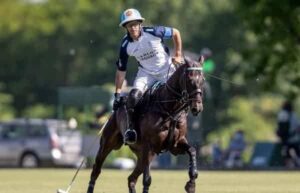
Adolfo Cambiaso is a ten-goal handicapped competitive polo player from Argentina. Adolfo Cambiaso is the player currently ranked top. Adolfo Cambiaso was born on April 15, 1975, in Cauelas, Buenos Aires Province.
He plays polo and has a 10-goal handicap. He is currently ranked first and is usually considered as the world’s best polo player. He goes by the names Adolfito or Dolfi as well.
2. Carlos Gracida
Carlos Gracida, a 1960 birth year, started playing in competitions at the age of 14 and advanced to a 10-goal handicap in 1985, which he maintained for 15 years.
He was a dominant force, winning the USPA Gold Cup® in 1980, the Silver Cup in 1980 and 1981, the 1998 Monty Waterbury Cup, the World, North American, Chairman’s, Inter-Circuit, and the U.S. Open Polo Championship in 1982, 1984, 1985, 1987, 1988, 1991, 1992, 1994, and 2003.
He also won the C.V. Whitney Cup in 1997, 2001, and 2004. He also had a strong international track reco8. Pelayo Berazadird, having triumphed in competitions in Argentina, Mexico, France, England, and France.
3. Guillermo Caset jr.
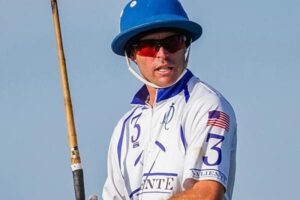
He was born in Argentina and plays polo. His handicap is 6. His accomplishments include the Camara de Diputados, US Open, USPA Gold Cup, and Indian Empire Shield.
4. Facundo Pieres
The second son of legendary polo player Gonzalo Pieres Sn and Cecilia Rodriguez Piola, Facundo Pieres Sn, was born into a polo family.
Professional polo players Tatiana Pieres, Gonzalo Pieres, Nicolas Pieres, and Cecilia Pieres are his siblings. Professional polo player Facundo Pieres from Argentina has a 10-goal handicap.
5. Mike Azzaro
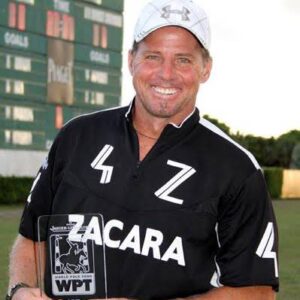
Mike Azzaro is a professional American polo player from San Antonio, Texas. So Mike now has six goals, although his biggest handicap of the game used to be ten goals.
Azzaro received the Polo Magazine Polo Excellence Award for Young Player of the Year in 1987 and 1990, as well as the Player of the Year award in 1994.
6. Luke Tomlinson
In fact, Luke Tomlinson plays polo professionally. A former captain of the England polo team, he had an eight-goal handicap in Argentina and a seven-goal handicap in the UK.
Tomlinson, who co-owns the Beaufort Polo Club with his family, was raised in Gloucestershire by polo players and later attended Trinity College in Cambridge and Eton. He does have a younger sister and brother that play polo professionally abroad.
7. Juan-Martín Nero
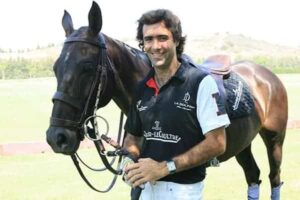
Juan is an Argentine polo player with a handicap of 10. So among the top players of 2017 polo, he is considered as the third place player. In 2001, he won the Gold Cup Deauville and the Gold Cup Sotogrande.
His other achievements include the Cartier Polo World Cup, Gold Cup, Queen’s Cup and CV Whitney Cup on Snow. He earned the USPA Gold Cup in 2009.
8. Gonzalo Pieres Jr.
Gonzalo Pieres, Jr., an Argentine polo player with a ten-goal handicap, was born on December 17, 1982, in Buenos Aires, Buenos Aires Province. Gonzalo Pieres Jr. is now recognised as the second-best player.
9. Pelayo Berazadi
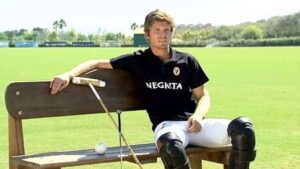
Since 1939, Pelayo has been regarded as the top Polo player in the UK. He claims that because polo is less well-liked in the UK than it is in Argentina and the United States of America, the country has not been able to create good polo players.
10. Corinne Ricard
The Murus Sanctus polo squad is sponsored by amateur player Corinne Ricard. She is one of the few women that play for an all-male professional squad.
One of the most well-known female polo players in the world, she has contributed significantly to the growth of women’s polo.
Sports Education
Triple Jump: All You Should Know About Rules And Technique

The triple jump, commonly referred to as the hop, step, and leap, is a track and field competition. Together, the long jump and triple jump are known to as “Horizontal Jumps.” In this competition, competitors run down a runway before jumping from the take-off board, landing on their takeoff foot, then taking a stride with their other foot before jumping into the sandpit.
According to the historical accounts of the ancient Olympic Games, there were sometimes fifteen-meter or longer leaps. The sports historians came to the conclusion that there must have been a succession of leaps that served as the foundation for the triple jump as a result of this.
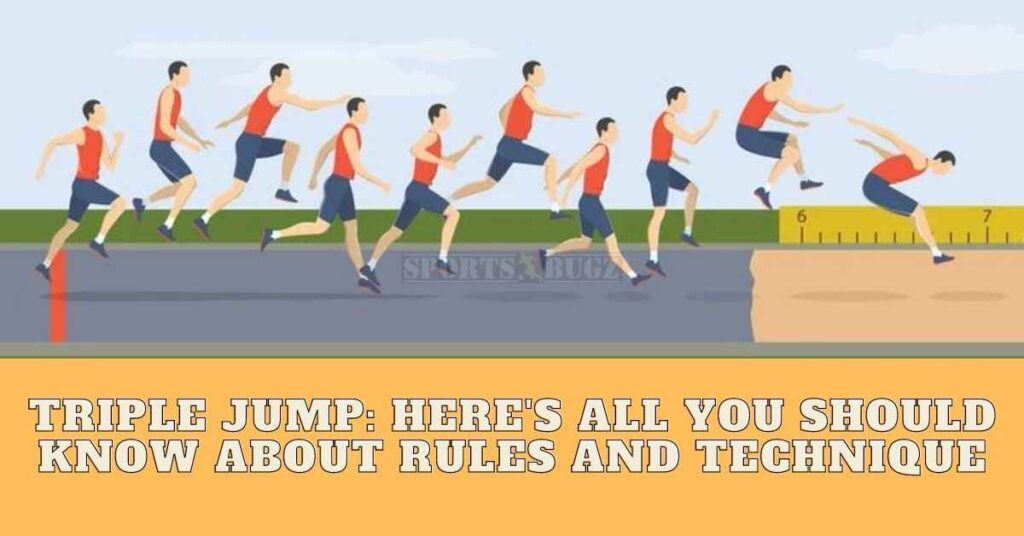
Furthermore, there is no confirmed proof that the event was part of the ancient Olympics, with the exception of the writers of the triumph songs who described some of the elements of it.
Triple Jump (Athletic Game) History
In 1896 in Athens, Greece, the triple jump was a competition in the first modern Olympics. Despite the fact that at the time, the event included two hops with the same foot before a leap. But in 1908, the new hop, skip, and jump format became adopted.
James Connolly, an American athlete and author, won the triple jump competition to become the first modern Olympic champion. Later in 1996, the Atlanta Olympic Games included the women’s triple jump event. In 2004 in Athens, Greece, Francoise Mbango won the gold and made history by being the first female athlete from Cameroon to take home an Olympic medal.
Between 1968 and 1976, the Soviet Union’s Viktor Saneyev won three consecutive Olympic gold medals in the men’s triple jump, while the United States’ Christian Taylor won gold in 2012 and 2016.
Triple Jump Rules
The International Association for Athletics Federations (“IAAF“) is the authority for developing and enforcing the triple jump rules & regulations.
- An approach run, a hop, a stride, and a leap make up the triple jump. A foul is committed if the athlete misses any of them.
- The athlete can leap from the take-off board or behind it but cannot jump beyond it.
- If an athlete hits the ground beyond the take-off board during their leap, it is a foul.
- A foul is committed if the player returns through the landing area.
- The distance should be calculated from the takeoff point to the heels’ backs or the closest point to the sand (that is the impression made on the sand).
- Even so, it is ruled a foul if the takeoff occurs while touching the red plasticine board.
- In the event of a foul, the judges shall display a red flag, and in the event of a right leap, a white flag.
- A bad leap counts as an attempt as well.
These are some of the general and compulsory rules to be followed in the athletic game of Triple Jump.
Triple Jump Rules Technique
The way a triple jumper moves is quite similar to how a small kid plays hop scotch. Before landing in the pit, an athlete must launch, land on the same leg, then land on the next opposite leg. Many of the traits that the long jump exhibits throughout the approach are also present in this event.
Good triple jumpers will launch at a far flatter angle than in the long jump, but that is where the similarities stop. We’ll look at the technical specifications, how to build them, how to set up the training week and day.
In the triple jump, there are two Highest Allowable Speed No. 3 Takeoff and the Hop The fourth step, the fifth jump, and the landing.
Increased Speed And Maximum Controllable Acceleration
By focusing on technique and strength, one may swiftly accelerate (starting and explosive). In the triple jump technique, 2 or 3 right/left steps or 4-6 total steps are needed to reach the top speed.
Your athletes will reach peak speed more quickly the slower they are. Your quicker athletes will need more time to reach their top pace.
The subsequent stages are carried out as quickly as is manageable. Success depends on maintaining this pace and an erect stance at the finish of the approach.
Drills for Acceleration
Series on Wall
- Place your athlete in the starting position with their hands up against a wall or fence and their body leaning 45 degrees from one leg up. Adapt them as necessary. Ask them to “feel” a straight line connecting their head, shoulders, hips, knees, and feet. Continue the exercise without lining up the athlete.
- Starting in position A, have the athlete take three to five steps in place (walking, marching, and then running), paying attention to where their feet land. Observe and cue the straight line repeatedly from head to toe.
- Have the athlete continue the exercise while staying in alignment and progressively erecting himself with each foot contact until they are standing.
Series Partners
- Have the athlete start in the same leaning position while being supported at the shoulders by a partner’s hands.
- Perform a five-step start, starting with a march and working up to a push.
- Repetition of the whole effort began, but at the fifth step, the partner will stand aside to enable the athlete to keep going faster.
- The athlete is free to accelerate on their own after establishing the proper lean on the partner. This set of exercises may also be performed while using a towel, belt, or harness as rear resistance.
The Rocking Start Technique
Starting with their takeoff foot in front, the athlete will then rock back until most of their weight is on the back leg. When they push out of this posture and “rock” back over their front leg, make sure they swing their arms counterclockwise to the swing of their legs.
The earth should be struck horizontally by all forces. The athlete may utilise the momentum created by the rock to help with the start if they begin in this way. It contributes to ensuring a solid, consistent start that results in an accurate approach.
Cues for Coaching Acceleration Work
Push while slanting your ankle. Tell the athlete to take their time as they carry out this step of the approach, letting the sensation of their feet touching the earth help them rise up.
Highest Speed
This trait has been covered in a lot of literature. Running exercises, sprints of varying lengths and intensities, hill running, over speed towing, approaches with or without a takeoff, and other advanced techniques may all be used to improve speed.
The maintaining of posture and pelvic position through to the finish of the approach are the crucial components of speed as they apply to leaps.
Taking Off and HOPing
While rookie athletes survive the landing from their long jump like launch, elite athletes build up the takeoff and initial phase (hop). The majority of newcomers in the triple jump will require persuasion that going through the board is more significant than takeoff height.
With the exception of the heel-to-toe (rocking) ground contact, there shouldn’t be any obvious differences between takeoff and the earlier parts of the approach. It’s a terrific cue to try to rush past the foot when it’s on the board.
The takeoff motion places a strong focus on horizontal movement. Instead of actively “cycling,” let the stretch in the hip flexors prepare the takeoff leg for the step. It is easier to shift to a slower leaping pace by not cycling the leg.
Coaching the free limbs may be fairly complicated, but the simplest advice is to keep them moving as closely to running as you can. Generally speaking, the hop will be the longest of the three stages. It should most crucially establish the step and maintain horizontal motion.
Drills for Takeoff and HOP
Series of Standing Triple Jumps
- Two-legged start – the athlete should begin as though doing a standing long jump. Have the hop foot start the triple jump motion (RRL or LLR) into the pit before you land.
- Takeoff foot start – similar to previous drills, but with the first step forward (takeoff foot) (RRL or LLR).
- Take one more step back when you start walking than you did in step B. (takeoff foot is moving or walking into the jump). Increase the walk-stairs. in’s
3- To 5-Step Approach, hop, and kneel in the pit
This exercise prepares the athlete to maintain the takeoff posture (initially). Swing leg will come forward during landing and departure leg will come back (lunge position).
The takeoff leg is then moved into position for the step’s landing. The takeoff leg will come down first, followed by the swing leg.
Approaches, short and full, with and without a hop
Both full and short approaches may be used for run throughs without a takeoff. In order to avoid having athletes land on the runway, do any hops from the closest board to the pit. Spikes should be used for these.
The Move
The most crucial thing is to get athletes in position for the step. By concentrating on the approach and hop, most of this is accomplished. It takes some preparation to get the athlete ready for this critical change.
The general coaching advice is to keep your horizontal speed up and to remain patient (wait for the ground to come to you). The rocking full foot contact mentioned in the previous steps is the greatest way to make contact.
Drilling steps
In Position Series
- Hop with one leg extended fully as you make contact with the ground.
- After fully extending into the ground, the athlete will then kick their butt.
- The performer will then kick their butt and bend their knee.
- Lastly, they will start to advance about one foot at a time. Athletes need to study this remedial series to be ready for the pressures they will experience on a complete leap, even though stretch reflexes will eventually set up a large portion of this sequence.
Run and Walk in Bounding Series
Utilize any Right and Left combination when walking or making short approaches. Favorite movements include LLLLR, LLLR, and LLRR (for left foot takeoff).
Small boxes (6-18″) may be utilised at various points in the sequence to test the athlete, depending on the quality of athletes you have.
Jumps from a short distance with a knee landing
Perform the hop and step with a knee landing and a very short approach with the right foot front and the left knee back (for left foot takeoff). Athletes should run as swiftly as they can from that distance while doing any short approach practise.
Make a point of standing up straight as soon as possible so that posture exercises are reinforced. Prior to takeoff, no chopped or extended steps should be employed.
The Leap
The athlete has slowed down significantly at this stage of the leap. The jump’s success depends on the body making touch with the ground below it. As a result, the athlete may continue to apply forces horizontally and decrease deceleration. The majority of leap phase practise will be combined with other phase activities.
If this area is isolated, the athlete could prepare for a takeoff similar to a long jump. The athlete may get a sense of what will happen during this phase by doing a few “weak leg” long leaps.
After some step practise, further single-leg hopping is a fantastic approach for the athlete to align themselves during this phase. An example would be a left foot takeoff, such as LLRRR or LLRR.
Triple Jump Track/Field

A triple jump track is made out of a runway path, a starting line marker, and a sand pit that is 14 feet from the takeoff line. Athletes race towards the takeoff point before performing the hop, step, and leap motions sequentially. The proper foot sequence must be used to execute all three components of the triple jump. The initial leap should be landed with the same foot that was used for takeoff. The third leap must be landed with both feet together, while the second jump must land on the opposite foot.
The leap is ruled invalid if the athlete fails the foot sequence or goes beyond the takeoff mark. Each athlete is given six tries, and the winner is the one who jumps the furthest.
Olympic triple jump competitions are held for both men and women. Competitions for the triple jump are held at all major sports events, including world championships.
Triple Jump Measurement

The closer edge of the landing area in the triple jump must be at least 36 feet (11 metres) away from the foul line for men and 27.89 feet (8.5 metres) away from the foul line for women. It is advised to keep a distance of 32 feet (10 metres) and 26 feet (8 metres), respectively.
Triple Jump World Record
With 15.67 metres, Yulimar Rojas owns the triple jump world record. Yulimar Rojas of Venezuela finally broke the world record set in 1995 by the Ukrainian Inessa Kravets with a huge, last-ditch jump of 15.67 metres to win the Olympic gold.
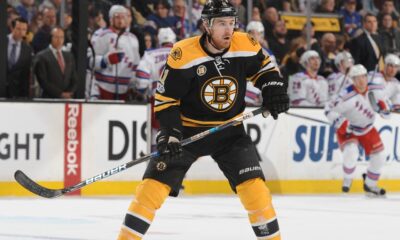
 Sportsperson3 years ago
Sportsperson3 years agoJimmy Hayes: Cause Of Death, Autopsy, Wife, Family, Net Worth

 Jockey3 years ago
Jockey3 years agoMeet Jamie Kah Ben Melham Relationship, Partner, Husband, Wife, More

 Top-Stories3 years ago
Top-Stories3 years agoHow Did Shawn Rhoden Die? Cause Of Death & What Happened

 YSCL3 years ago
YSCL3 years agoYSCL India 2021: Auction, Registration Form, Selection List & Benefits
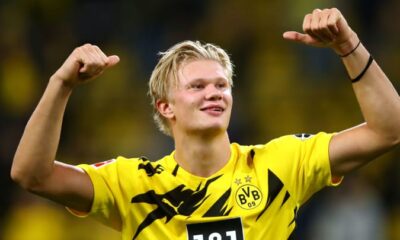
 Football3 years ago
Football3 years agoErling Haaland Religion: Father, Net Worth, Salary, Bio

 Sportsperson3 years ago
Sportsperson3 years agoBrandon Short: Net Worth, Career, Earnings, Wife, Daughter

 PKL3 years ago
PKL3 years agoPro Kabaddi 2021 Vivo PKL Date, Venue, Team Players, Schedule

 Sports Drink3 years ago
Sports Drink3 years agoPrime Drink Net Worth 2023, Revenue Company, Price & Value
